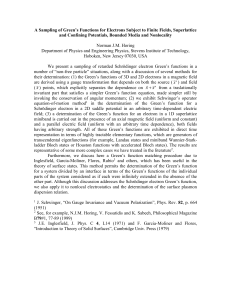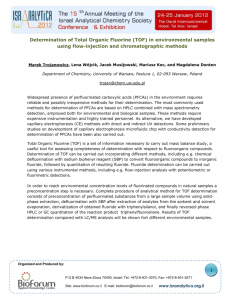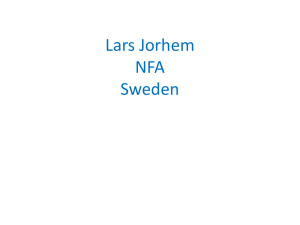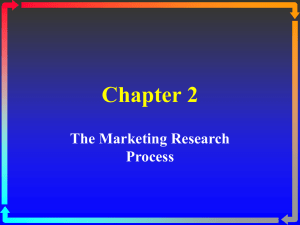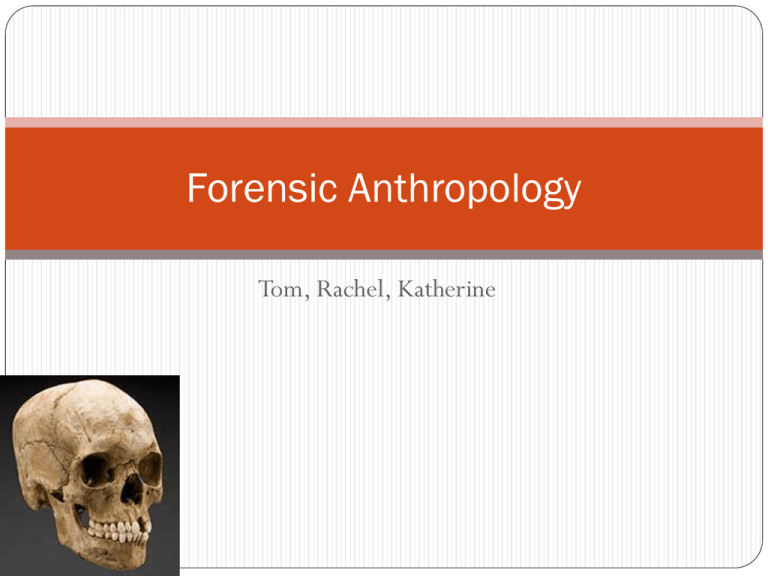
Forensic Anthropology
Tom, Rachel, Katherine
Introduction
The main bones we’re interested in:
*Cranium/Skull
*Pelvis
*Tibia
*Femur
*Humerus
What Can We Learn?
Determination of Sex:
-Pelvis
-Skull
Determination of Race:
-Skull
Approximate Age:
-Growth of long bones
Approximate Stature:
-Length of long bones
Determination of Sex
The Pelvis is the best area to study sex
-Females have wider sub pubic angles for giving birth
Determination of Sex
The Cranium/Skull is also very helpful in determining sex
- Men’s chins are significantly more square and their ridges
and crests are more pronounced
Determination of Race
Forensic Anthropologists place bones in three races:
Caucasian, Asian and African
It’s very difficult to determine race because many people are
biracial and also not all individuals have skeletal traits that are
consistent w/ their race
The nasal index (the ratio of the width to the height of the
nose multiplied by 100), nasal spine, prognathism (extended
lower jaw), and the shape of the eye orbits all help determine
race
Determination of Race
Caucasian
-Nasal index: <.48
-Nasal Spine: Prominent
-Prognathism: Straight
-Eye orbitals: Rounded, somewhat square
Determination of Race
Asian:
-Nasal index: .48-.53
-Nasal Spine: somewhat prominent
-Prornathism: Variable
-Eye orbitals: Rounded, somewhat circular
Determination of Race
African:
-Nasal index:>.53
-Nasal Spine: Very small spine
-Prognathism:Prognathic
-Eye orbitals: Rectangular or square
Determination of Age
We use teeth, bone fusion, the hardness, wear and tear, and
any damages to determine age
Determination of Age
0-5: teeth are best
6-25: fusion starts and ends at about 25
25-40 bones are very hard
40+: wear and tear on bones
Determination of Stature
Our long bone length (femur, tibia, humerus) is proportional
to height
Formula for height: 2.89(humerus length)+78.10 (all in cm)
Example: If the humerus length=30.8, their height would be
determined by 2.89(30.8)+78.10 cm
Miscellaneous Information
We can find out how they died based on any trauma
(gunshots to head, etc.)
Any evidence of post mortem trauma such as bite-marks
(cannibalism)
Any activities the victim enjoyed, example:You can find out
different activities the victim liked based on their damage and
“wear and tear” in certain areas of their body

